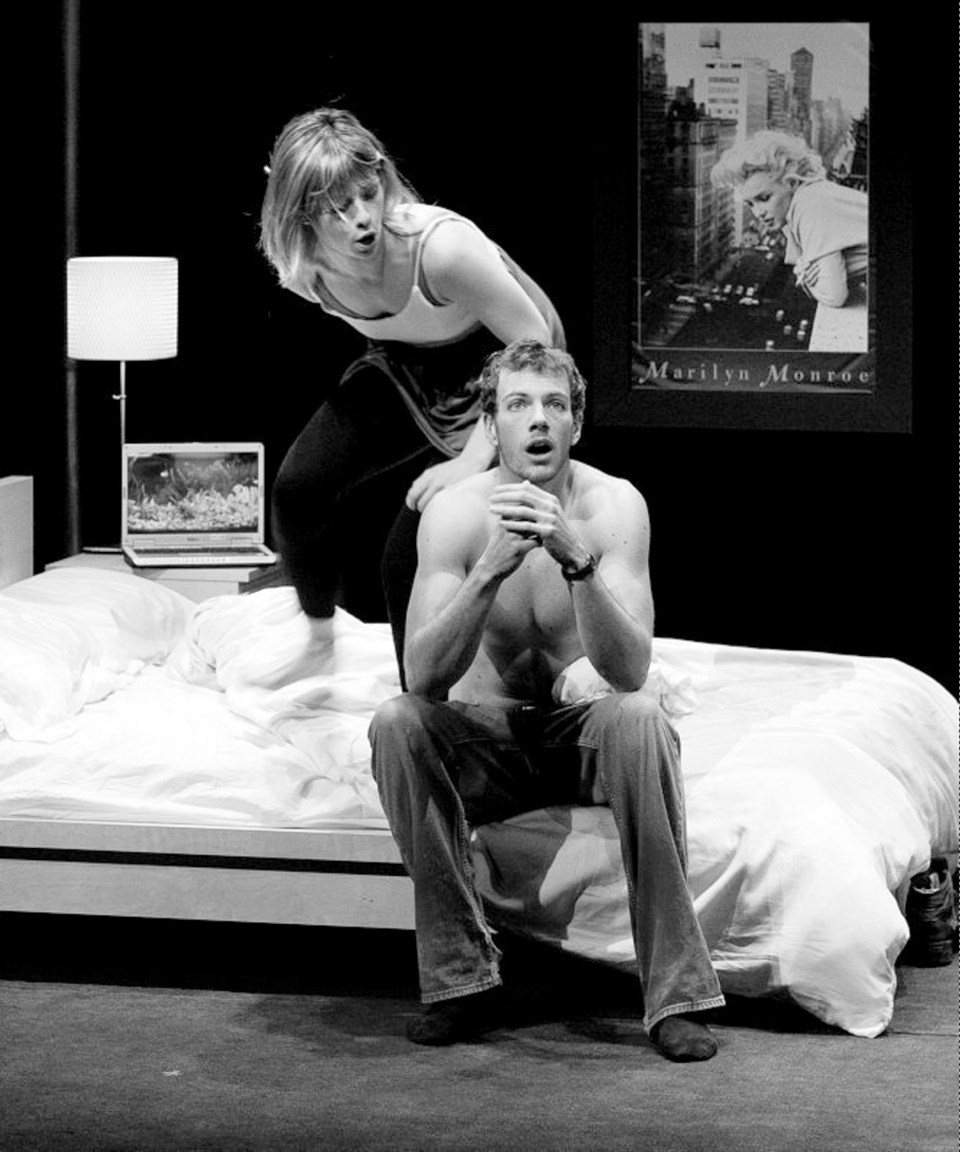Review
Reasons to be Pretty
Where: Phoenix Theatre, University of Victoria
When: To Feb. 23
Rating: 4 1/2 stars (out of five)
Neil LaBute’s Reasons to be Pretty starts in full swing, with a young woman screaming at her boyfriend with remarkable vehemence.
What has he done, we wonder? Has he been unfaithful, been arrested for selling drugs, smashed her brand-new Smart car? No. His crime is having described her looks to a friend as being merely “regular.”
“Why,” laments Steph, “would you ever say something like that about someone?”
Reasons to be Pretty is the third in LaBute’s triology about society’s obsession with physical appearance (the others are The Shape of Things and Fat Pig). UVic’s theatre department has done a terrific job with this black comedy, which boasts an unusually strong student cast and crisp, stylish direction from Christine Willes. It’s is not for the faint of heart — the play may win the prize for the most expletives packed into 21Ú2 hours (with intermission). Yet it’s worth seeking one out; Reasons to be Pretty is bound to be one of the season’s highlights.
Criticized by some for the heartlessness of his misogynist characters and being cynically judgmental about human behaviour, critics have praised Reasons to be Pretty for showing a new maturity and compassion.
It’s about a quartet of working-class characters. Steph (Reese Nielsen) is a hairdresser. Her put-upon boyfriend, Greg (Robin Gadsby), is a warehouse worker striving to better himself — he’s studying English literature at a community college. Fellow warehouser Kent (Alex Frankson) is a lunk-headed guy’s guy who lusts after the prettiest women and dreams of softball glory. His girlfriend, Carly (Alberta Holden), works at the warehouse as a security guard.
Greg tries to defend his “regular” remark, explaining that he wouldn’t trade Steph for a million bucks. But the damage has been done. Steph is insecure about her appearance. For her, Greg’s faux pas opens up a Pandora’s box stuffed with images of perfect, photoshopped women in magazines and her own brittle notions of romance.
Kent, who of the four characters comes closest to caricature, represents much of Steph is reacting against. He’s all about appearances. A typical rage-filled LaBute male, Kent becomes involved with a new “hot” girl at the warehouse solely based on her looks. He describes her appearance in grotesquely callow detail, as one might describe a new household appliance.
Greg, meanwhile, is batted like a ping-pong ball by the misguided yet powerful impulses that drive his friends.
Ultimately, he manages to rise to a higher moral level; LaBute suggests education is the catalyst. Greg often mentions the books he is reading (notably Nathaniel Hawthorne’s The Birth-Mark, about a woman whose beauty is marred by a birthmark). In this production, Greg wears T-shirts with literary logos, advertising Of Mice and Men and A Farewell to Arms.
It sounds a bit over the top, but somehow it works.
All the actors are strong — all obviously have careers ahead of them if they so choose.
Nielsen, as Steph, is a standout, capturing her complex, contradictory character with great heart and verve. On Friday night, she earned applause after her splendid monologue in a food court, in which (in a retaliatory move) she loudly itemizes all of Greg’s physical shortcomings, including his habit of biting his toenails.
Gadsby, Frankson and Holden all have fine moments, too; each taps into the core of his or her character.
Friday’s performance began much too briskly — the argument between Steph and Greg careened ahead like a skier tumbling down a hill. The pair soon found their bearings, however.
Willes’s decision to screen videos of the warehouse onto the stage and sides of the theatre space is a good one — it immerses us further in the action.
Clever sets designed by Breanna Wise, including a lunchroom that pulls forward to the audience, depict a myriad of scenes with pleasing economy.



